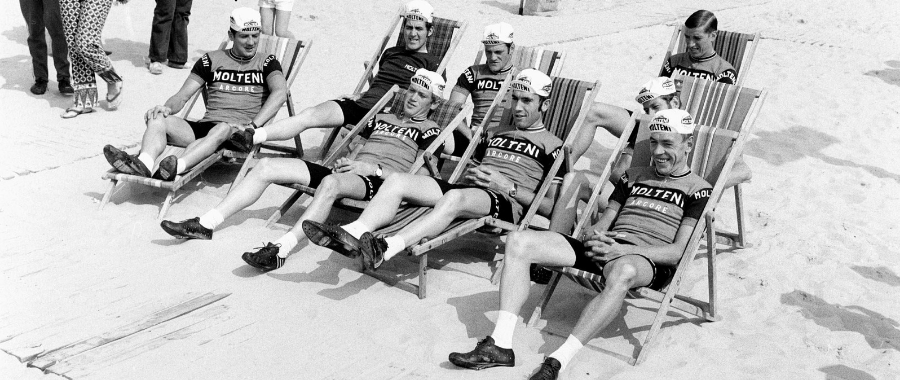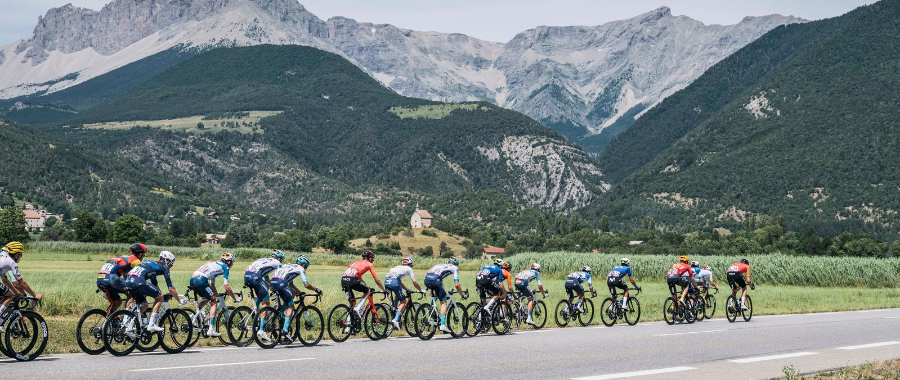Riding the Tour de France without a team might sound like an intriguing idea, but it is practically impossible in the modern era. While it is
theoretically possible for a solo rider to participate in the Tour de France,
it would be under specific conditions, and even then, the challenges would be immense. The rules of the Tour de France, like all professional cycling events, are governed by the Union Cycliste Internationale (UCI), which is the international governing body for cycling. The UCI sets the standards for team participation, which include regulations on team composition, the types of teams that can enter, and the support infrastructure that must accompany each team.
According to current UCI regulations,
all riders in the Tour de France must be part of a UCI WorldTeam or a UCI ProTeam,
which are professional cycling teams officially registered and recognized by the UCI. These teams are composed of elite cyclists who have undergone rigorous selection processes and training, and who work together under the guidance of a team director to achieve the best possible results in races. Therefore, to participate in the Tour de France, a rider must be registered with one of these professional teams.
In a hypothetical scenario where a solo rider is somehow allowed to participate in the Tour de France, they would still face enormous logistical and practical challenges. The race is not just a test of physical endurance but also requires significant logistical support, which is typically provided by a team structure. This support includes a team car that follows the riders throughout each stage, carrying spare bikes, wheels, and other essential equipment. The team car also carries food, drinks, and other supplies that are critical for maintaining the rider’s energy levels during the race.
In addition to the team car, professional teams employ mechanics who are responsible for ensuring that the bikes are in optimal condition before and during the race. This includes performing routine maintenance, making adjustments based on the day’s stage profile, and quickly fixing any mechanical issues that arise during the race. A solo rider without this support would be at a significant disadvantage, as they would have to manage all of these aspects on their own, which would be virtually impossible during a race as demanding as the Tour de France.
Furthermore, professional teams have a team director, often a former professional cyclist with deep tactical knowledge of the sport, who drives the team car and communicates with the riders throughout the race via radio. The team director plays a crucial role in devising race strategies, making tactical decisions, and providing motivation and guidance to the riders. Without a team director, a solo rider would have to make all of these decisions on their own, which would be extremely difficult given the complexity and fast-paced nature of the race.
In essence, even if a solo rider were allowed to participate in the Tour de France, they would struggle to even start, let alone finish, the race without the extensive logistical support that is typically provided by a professional team.
Historically, cycling races, including the Tour de France, were much more individualistic.
In the early days of the Tour de France, riders had far less team support and were often left to fend for themselves on the long and grueling stages. The race was originally conceived as a test of individual endurance and resilience, with less emphasis on team tactics and more on the sheer ability to survive the grueling conditions.
In those early years, riders were responsible for their own repairs and had to carry spare tires and tools with them. They were also responsible for their own food and drink, often relying on local cafes or streams for sustenance during the race. While some riders had informal alliances or support from friends, the idea of organized teams did not become a central part of the race until later.
As the sport of cycling evolved, so did the Tour de France. The introduction of formal teams brought a new level of strategy and organization to the race. By the mid-20th century, teams had become an integral part of professional cycling, with riders working together to achieve common goals. The shift from individual to team racing transformed the Tour de France into a much more tactical and strategic event, where success depended not only on individual strength and endurance but also on the ability to work as part of a cohesive unit.
In modern professional cycling,
teams play a crucial role in determining the outcome of the Tour de France.
Each team in the Tour typically consists of eight riders, although this number has varied slightly over the years. Among these eight riders, there is usually a designated team leader, who is the rider with the best chance of winning the general classification (GC), or overall race. The other riders, known as domestiques, have the primary role of supporting the team leader, often sacrificing their own chances of winning individual stages or classifications to ensure the leader’s success.
The roles within a team are highly specialized, with different riders excelling in different types of terrain and stages. For example, some riders are climbing specialists who can support the team leader in the mountainous stages, while others are strong on flat terrain and can help control the pace of the peloton or lead out sprints. The domestiques are also responsible for fetching food and drink from the team car, helping the leader with mechanical issues, and protecting them from wind and other hazards during the race.
The team’s strategy is often centered around protecting the leader from unnecessary exertion and ensuring they are in the best possible position to attack or defend their position in the key moments of the race. This includes controlling the pace of the peloton to prevent dangerous breakaways, setting a steady pace on climbs to fend off attacks from rival teams, and delivering the leader to the finish line in the best possible condition.
Without a team, a rider would have to manage all of these responsibilities on their own, which would be nearly impossible given the demands of the Tour de France. The cumulative effect of having no team support would quickly lead to exhaustion, making it unlikely that a solo rider could compete effectively for the general classification or even complete the race.
MORE FREQUENTLY ASKED QUESTIONS
Why Tour de France is the peak of every cycling season?
The world of professional road cycling is vast, with countless races held across continents, each testing riders’ strength,… Read More »Why Tour de France is the peak of every cycling season?
Do riders ride every day in Tour de France?
Modern day Tour de France consists of 21 stages. But it doesn’t mean, that riders have to ride… Read More »Do riders ride every day in Tour de France?
How do cyclists tackle the punishing climbs of Tour de France?
The Tour de France is renowned for its punishing climbs, which often define the race and distinguish the… Read More »How do cyclists tackle the punishing climbs of Tour de France?

